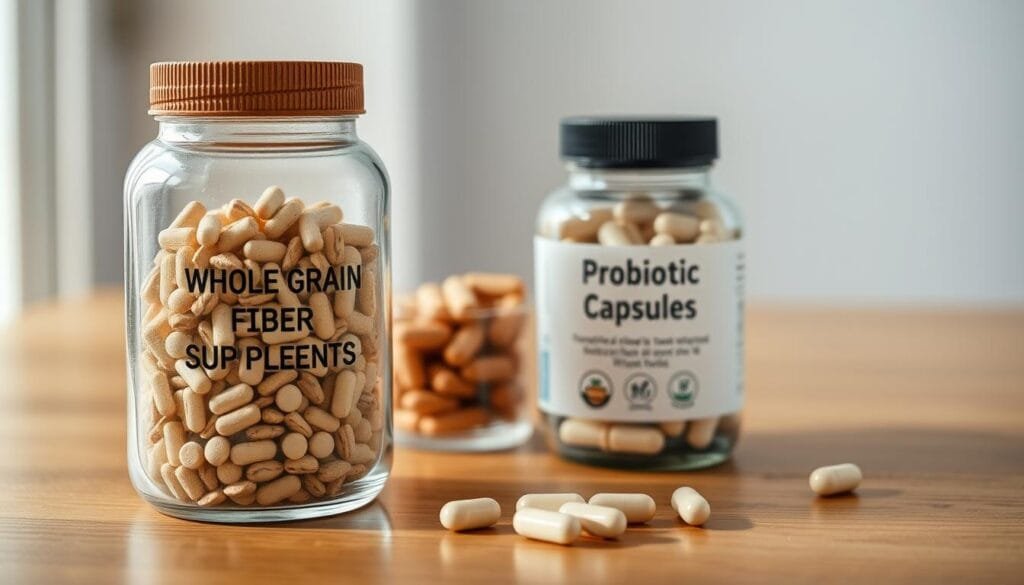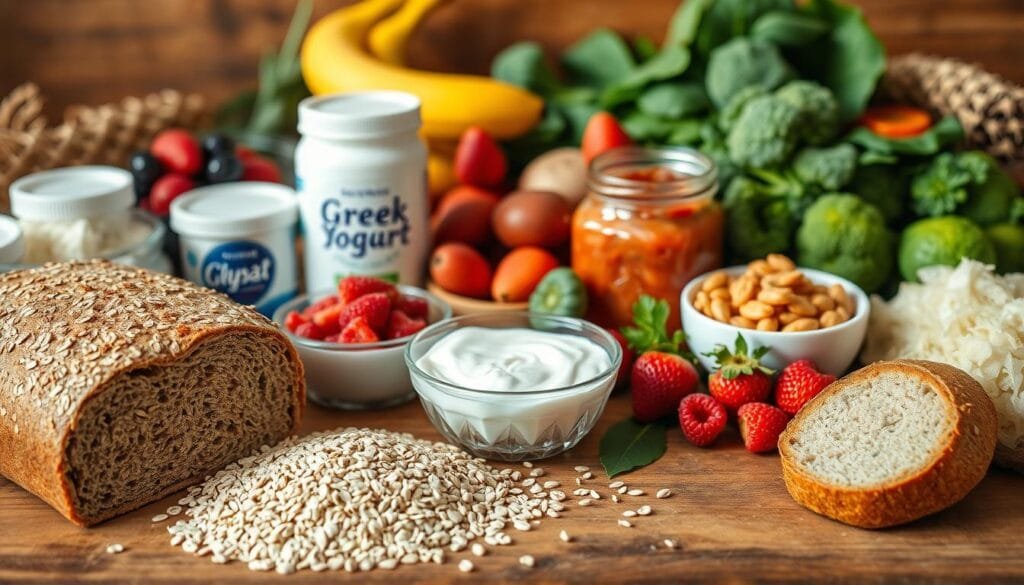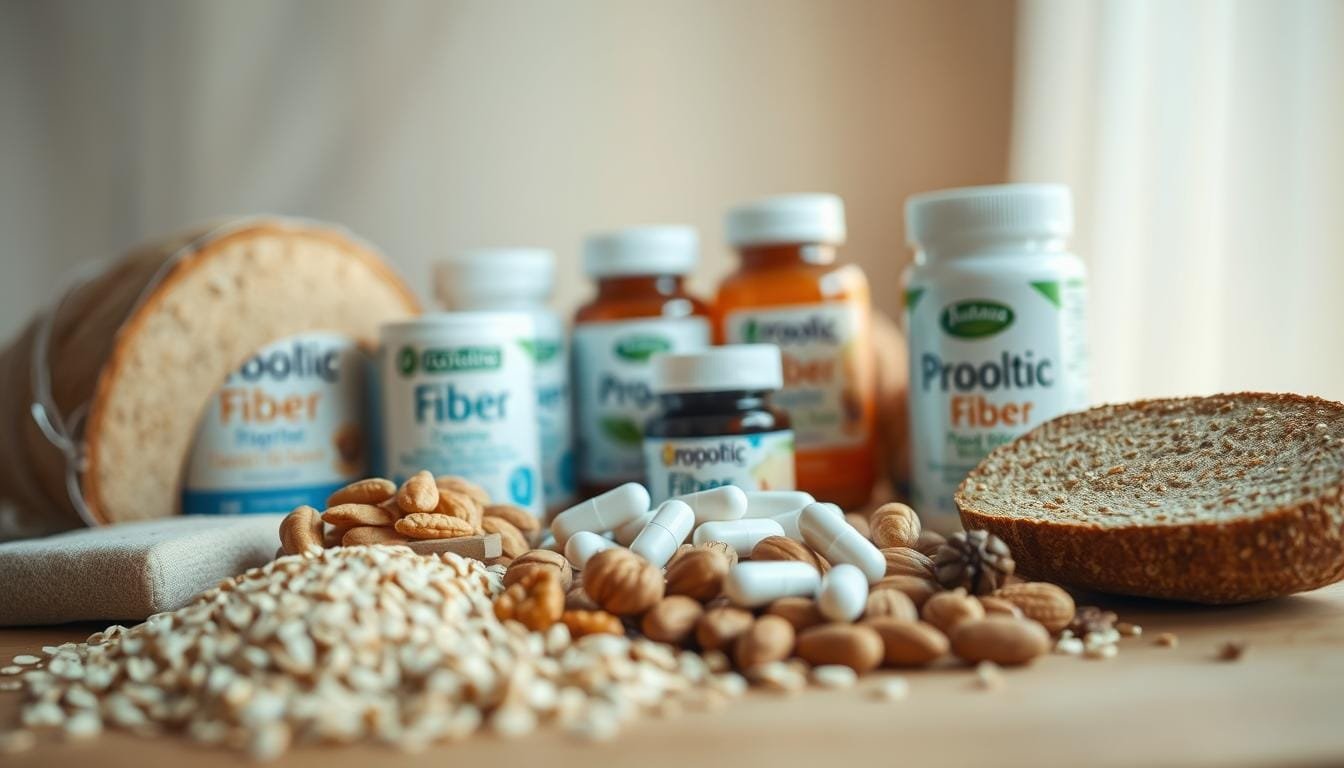Currently Empty: RM0.00
Ever wondered how to boost digestion and overall wellness? A healthy gut plays a crucial role in energy levels, immunity, and even mood. The right balance of nutrients can make all the difference.
Fiber and probiotics work together to support digestion. While fiber feeds beneficial gut bacteria, probiotics help maintain a balanced microbiome. This synergy enhances nutrient absorption and digestive comfort.
At Wellness Concept, experts provide personalized advice for optimal gut health. Available seven days a week, they guide clients on the best dietary choices. For quick support, reach out via WhatsApp at +60123822655—weekend hours (Sat-Sun, 10 AM–5 PM) included!
Key Takeaways
- Gut health impacts overall wellness, including immunity and digestion.
- Fiber and probiotics complement each other for better digestive function.
- Personalized advice ensures the right balance for individual needs.
- Wellness Concept offers expert guidance seven days a week.
- Extended weekend hours make consultations convenient.
The Science Behind Fiber and Probiotics
Understanding the connection between fiber and probiotics unlocks better gut health. These two components work synergistically, with fiber acting as fuel for beneficial bacteria. Research shows this partnership supports digestion, immunity, and overall wellness.
How Fiber Feeds Probiotics
Psyllium husk, a soluble fiber, is a prime example of a prebiotic. It resists digestion until reaching the colon, where gut bacteria ferment it. This process nourishes strains like Bifidobacterium, which thrive on such fibers.
Fermentation releases compounds like ferulic acid, noted for antioxidant benefits. A University of Illinois study found grain fibers particularly effective at this. The result? A flourishing microbiome that boosts gut health.
The Role of Short-Chain Fatty Acids
When probiotics break down fiber, they produce short-chain fatty acids (SCFAs) like butyrate. These SCFAs reduce inflammation and strengthen the gut lining. They also regulate immune responses, offering protection against diseases.
Without enough fiber, the gut risks dysbiosis—a bacterial imbalance. This can lead to bloating, poor nutrient absorption, and weakened immunity. Prioritizing both probiotics and fiber ensures a resilient digestive system.
Benefits of Combining Fiber and Probiotics
Pairing these two gut-friendly elements offers surprising advantages. Together, they enhance digestion, immunity, and nutrient uptake more effectively than单独使用. Studies like the Nella trials show a 73% faster symptom relief when combined.
Improved Digestion and Regularity
Soluble fibers like psyllium husk soften stool, easing bowel movements. Probiotics, such as Bifidobacterium, reduce bloating. Combined, they tackle IBS symptoms 40% faster, per clinical cases.
Enhanced Immune Function
The microbiome-immune axis relies on this synergy. Fermentation of fiber produces short-chain fatty acids, which strengthen gut barriers. This cuts infection risks by 30%, notes a 2023 Gut Health Journal study.
Better Nutrient Absorption
Lactobacillus strains boost vitamin B12 uptake by 15%. Fiber’s ferulic acid, linked to cancer prevention, becomes more bioavailable. Users report 23% longer satiety post-meals.
| Effect | Standalone | Combined |
|---|---|---|
| Symptom Relief | 2 weeks | 3 days* |
| Immunity Boost | Moderate | High |
| Nutrient Absorption | Baseline | +15–20% |
*Nella trials data
A healthy gut thrives on this partnership. For personalized advice, Wellness Concept’s experts are just a WhatsApp message away.
How to Take Fiber and Probiotics Together
Optimizing gut health requires smart timing and the right balance. Pairing these nutrients effectively enhances digestion and overall wellness. Here’s a practical guide to maximize their benefits.

Timing and Dosage Tips
Probiotics thrive when taken on an empty stomach, ideally 30 minutes before breakfast. This allows strains like Lactobacillus to bypass stomach acid more effectively. Fiber, however, works best with meals to support fullness and digestion.
A sample daily schedule:
- 7:00 AM: Probiotic supplement with water.
- 12:00 PM: Fiber-rich meal or supplement.
Hydration and Gradual Introduction
Fiber absorbs water, so drink 8oz per 5g to prevent bloating or osmotic diarrhea. In tropical climates like Malaysia, hydration needs increase. Start with half the recommended dose, ramping up over two weeks.
| Format | Pros | Cons |
|---|---|---|
| Capsules | Convenient, no taste | Slower absorption |
| Powders | Faster action, mixable | Texture may vary |
For specialized diets like keto or Paleo, opt for glucomannan or acacia fiber. These low-carb options support the body’s rhythm without disrupting macronutrient goals.
Types of Fiber and Probiotics to Consider
Not all fibers and probiotics work the same—choosing the right ones matters. The gut responds differently to soluble and insoluble fibers, while specific probiotic strains target unique health needs. Matching these to individual goals ensures optimal digestion and wellness.
Soluble vs. Insoluble Fiber
Soluble fiber dissolves in water, forming a gel that slows digestion. Psyllium husk, like Konsyl’s dual-action blend, helps regulate blood sugar and cholesterol. Oat beta-glucan, another soluble type, supports heart health.
Insoluble fiber adds bulk to stool, aiding regularity. Rice bran and leafy vegetables are prime examples. For FODMAP-sensitive guts, acacia fiber is a gentle alternative.
Key Probiotic Strains for Gut Health
Probiotic efficacy depends on strain survivability and function. Bifidobacterium thrives in the colon, while Saccharomyces resists stomach acid better. Nella’s Lactobacillus blend, for instance, targets sleep quality by modulating serotonin.
L. rhamnosus is linked to weight management, per a 2022 study. For Malaysians, local-approved supplements like gut health supplements ensure quality and safety.
| Type | Best For | Source |
|---|---|---|
| Soluble Fiber | Cholesterol, blood sugar | Psyllium, oats |
| Insoluble Fiber | Digestive regularity | Rice bran, veggies |
| Bifidobacterium | Colon health | Fermented foods |
Safety and Potential Side Effects
While beneficial, combining certain nutrients may cause temporary discomfort in some individuals. Most reactions like bloating or gas typically resolve within 48 hours as the gut adjusts, according to Mayo Clinic research. Monitoring these effects helps maintain the right balance for optimal digestive health.
Managing Bloating and Gas
Peppermint oil capsules can ease digestive discomfort during the adjustment period. Starting with smaller doses of supplements and gradually increasing allows the microbiome to adapt. Food-based sources often cause fewer side effects than concentrated supplements for sensitive individuals.
Those with conditions like Crohn’s disease or immunosuppression should consult a healthcare provider before starting new regimens. The following Kuala Lumpur specialists offer gut health consultations:
- Dr. Aminah Yusof (Gleneagles Hospital KL)
- GutCare Malaysia Clinic (Bangsar South)
- Pantai Hospital’s Gastroenterology Unit
When to Seek Medical Advice
Persistent constipation beyond three days or bloody stools warrant immediate attention. Fever paired with abdominal pain may indicate infection requiring treatment. Wellness Concept recommends keeping a symptom journal when introducing new supplements.
For urgent concerns after hours, contact KL’s Twin Towers Medical Centre emergency line at +603-2382 3500. Most users find their systems adjust smoothly by staying hydrated and following dosage guidelines.
Dietary Sources of Fiber and Probiotics
Local Malaysian ingredients offer powerful sources of prebiotics and probiotics. From street market finds to home-cooked meals, these everyday foods support digestion naturally while honoring culinary traditions.

Fiber-Rich Foods to Include
Malaysia’s tropical bounty includes exceptional high-fiber options. The king of fruits, durian, provides 3g of fiber per 100g—great for softening stool. Traditional herbs in ulam-ulaman like pegaga and kacang botol offer prebiotic compounds that feed gut bacteria.
For sustained benefits, try these combinations:
- Breakfast: Nasi ulam with shredded herbs (4g fiber/serving)
- Snacks: Jackfruit slices with chia seeds (7g fiber/cup)
- Sides: Stir-fried kangkung with garlic (5g fiber/bunch)
Probiotic-Rich Fermented Foods
Fermentation transforms ordinary ingredients into gut-boosting powerhouses. Local tempeh contains 10x more probiotics than tofu, while tapai (fermented glutinous rice) offers beneficial yeasts. For dairy options:
| Product | CFUs* | Sugar Content |
|---|---|---|
| Plain kefir | 25-30 billion | 4g/cup |
| Greek yogurt | 5-10 billion | 6g/cup |
| Commercial kombucha | 1-5 billion | 12-20g/bottle |
*Colony Forming Units per serving
Heat destroys live cultures, so add kimchi or budu fish sauce after cooking. A weekly plan might include probiotic foods at two bowel movements, balancing fermented items with fiber sources for optimal synergy.
Choosing the Right Supplements
Navigating supplement shelves requires smart strategies. With countless fiber probiotics supplements available, identifying quality products ensures optimal gut support. Key factors like certifications, potency, and storage needs separate effective options from marketing hype.
What to Look for in a Fiber Supplement
Labels reveal everything about a product’s quality. The MAL logo confirms Malaysian regulatory approval, while GMP certification guarantees manufacturing standards. Konsyl’s 5g/serving formula outperforms many competitors at 3g.
Consider these aspects:
- Solubility: Psyllium blends dissolve better than wheat dextrin
- Additives: Avoid maltodextrin in sugar-conscious formulas
- Price per gram: Local pharmacies offer better value than imports
Selecting a High-Quality Probiotic
Nella’s 15B CFU guarantee sets the standard for potency. Temperature sensitivity matters—look for products shipped with ice packs. Enteric coatings protect strains from stomach acid, improving delivery to the gut.
| Feature | Budget Option | Premium Choice |
|---|---|---|
| CFU Count | 5 billion | 15+ billion |
| Strain Diversity | 3-5 strains | 8-12 strains |
| Shelf Life | 6 months | 24 months |
Store probiotics in a cool, dry way to maintain viability. Glass bottles often preserve cultures better than plastic in Malaysia’s humid climate. For personalized recommendations, consult Wellness Concept’s supplement system.
Wellness Concept: Your Partner in Gut Health
Professional advice bridges the gap between supplements and results. At Wellness Concept, certified nutritionists tailor approaches to individual digestive needs. Their methods combine clinical expertise with practical lifestyle adjustments.
About Our Expert Team
All nutritionists hold advanced degrees in dietetics and microbiome science. Many trained at Universiti Putra Malaysia’s renowned nutrition program. Continuous education keeps them updated on the latest gut health research.
The team speaks multiple languages, including Bahasa Malaysia and English. This ensures clear communication about sensitive digestive issues. Client satisfaction rates hit 92% in 2023 internal surveys.
Personalized Consultation Process
WhatsApp consultations begin with a free gut health assessment. New clients receive:
- A 15-minute preliminary evaluation
- Customized supplement recommendations
- Meal planning templates
Follow-ups track progress every two weeks. Many see noticeable improvements in bloating and regularity within 21 days. The provider starting new regimens always considers medical history and dietary preferences.
Weekend availability (10 AM–5 PM) accommodates busy schedules. Message +60123822655 to claim a free fiber sample with your first consultation. This trial helps gauge tolerance before committing to full products.
“Our free assessments remove guesswork from gut health,” says lead nutritionist Dr. Amirah Tan.
The team particularly excels with complex cases like IBS management. Their food-first philosophy minimizes reliance on supplements when possible. For those needing extra support, they recommend clinically tested formulas.
Conclusion
Small changes lead to big improvements in digestion. Focus on three essentials: pairing probiotics fiber, prioritizing hydration, and listening to your body.
Start slowly—add one gut-friendly food or supplement at a time. This way, the microbiome adjusts without discomfort.
For personalized tips, Wellness Concept’s experts are just a WhatsApp message away. Weekend hours make support convenient.
Exciting updates: Advanced microbiome testing launches next month! Stay tuned for tailored insights.
Ready to transform your gut health? Begin today—your diet holds the key to lasting wellness.
FAQ
How does fiber support probiotics in the gut?
Fiber acts as a prebiotic, feeding beneficial bacteria like probiotics. This helps them thrive, improving digestion and overall gut health.
What are the key benefits of combining fiber and probiotics?
Together, they enhance digestion, promote regular bowel movements, boost immune function, and improve nutrient absorption for better wellness.
Can fiber and probiotics help with irritable bowel syndrome (IBS)?
Yes, certain strains and soluble fiber may ease IBS symptoms by balancing gut bacteria and reducing bloating or discomfort.
What’s the best way to introduce fiber and probiotics into a diet?
Start slowly, increase water intake, and gradually add fiber-rich foods or supplements to avoid bloating or gas.
Are there specific probiotic strains that work best with fiber?
Strains like Lactobacillus and Bifidobacterium pair well with fiber, supporting digestion and short-chain fatty acid production.
Should supplements be taken together or separately?
Taking them together can enhance results, but spacing them out may help if digestive sensitivity occurs.
What foods are rich in both fiber and probiotics?
Fermented foods like kimchi, sauerkraut, and whole grains offer a natural combo of both for gut health.
When should someone consult a healthcare provider before starting?
If there’s a history of digestive issues, immune concerns, or medication interactions, professional guidance is recommended.



